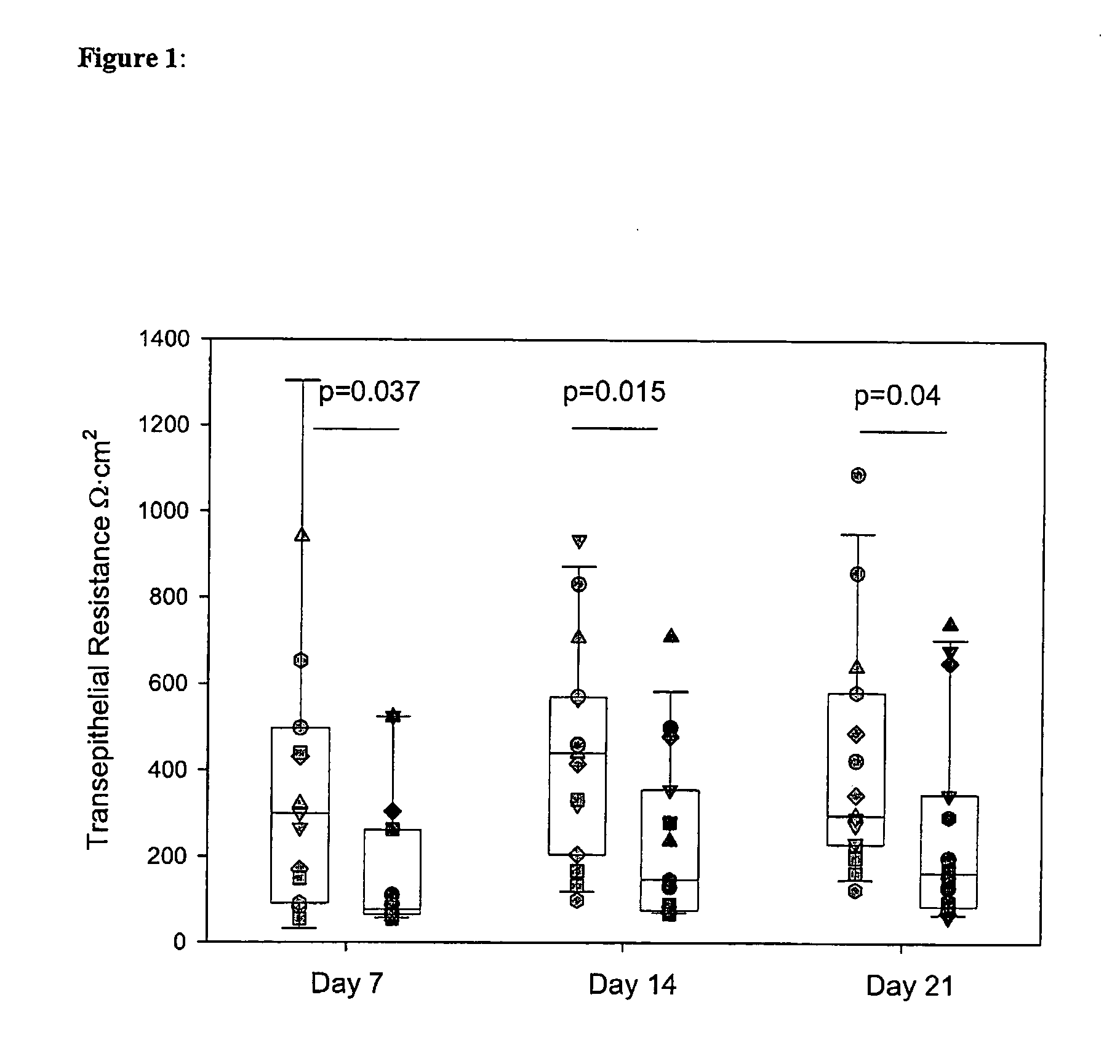Screening assay for improvement of epithelial barrier function
a screening assay and epithelial barrier technology, applied in the field of screening assay for can solve the problems of asthmatic subjects' biopsies showing epithelial damage, affecting so as to achieve the effect of improving the function of epithelial barrier and plateauing in the measurement of barrier function
- Summary
- Abstract
- Description
- Claims
- Application Information
AI Technical Summary
Benefits of technology
Problems solved by technology
Method used
Image
Examples
examples
Methods
Clinical Characterisation of Subjects
[0038] Subjects were characterised according to symptoms, lung function, medication and skin prick test to common aero-allergens. Asthma severity was assessed using the Global Initiative for Asthma (GINA) guidelines on the diagnosis and management of asthma (Bousquet J. (2000) Clin. Exp. Allergy 30 (1):2-5) and BHR determined using methacholine inhalation challenge, and expressed as PC20 (the cumulative dose of methacholine required to produce a 20% fall in Forced Expiratory Volume in 1s [FEV1] from baseline values). All volunteers were non-smokers and free from respiratory tract infections for a minimum of 4 weeks prior to inclusion to the study. Written informed consent was obtained from all volunteers prior to participation, and ethical approval for the study was obtained from the Joint Ethics Committee of Southampton University Hospital Trust. Twenty-one non-atopic, normal control volunteers (16 female; age median (range), 25 (19-3...
PUM
| Property | Measurement | Unit |
|---|---|---|
| time | aaaaa | aaaaa |
| time | aaaaa | aaaaa |
| pore size | aaaaa | aaaaa |
Abstract
Description
Claims
Application Information
 Login to View More
Login to View More - R&D
- Intellectual Property
- Life Sciences
- Materials
- Tech Scout
- Unparalleled Data Quality
- Higher Quality Content
- 60% Fewer Hallucinations
Browse by: Latest US Patents, China's latest patents, Technical Efficacy Thesaurus, Application Domain, Technology Topic, Popular Technical Reports.
© 2025 PatSnap. All rights reserved.Legal|Privacy policy|Modern Slavery Act Transparency Statement|Sitemap|About US| Contact US: help@patsnap.com

